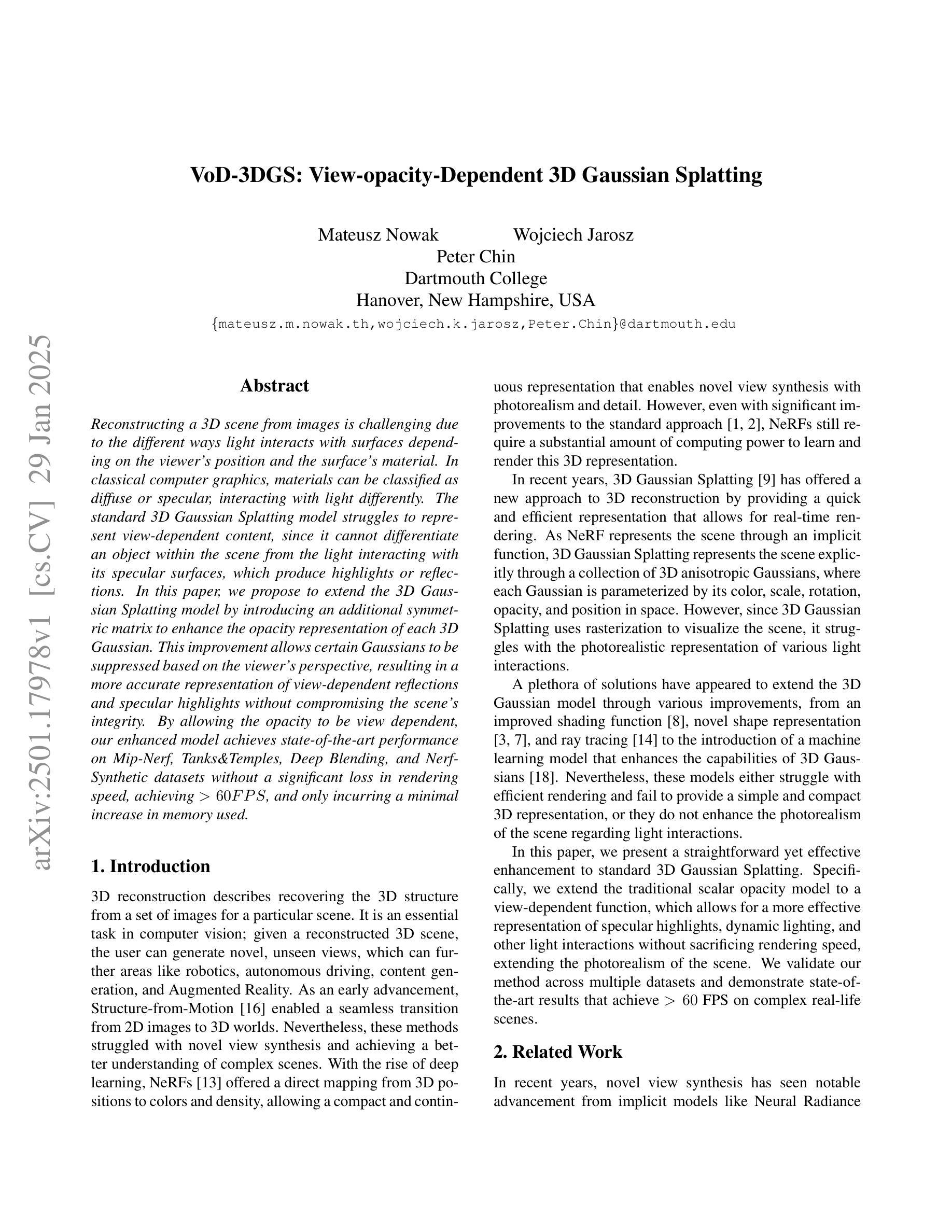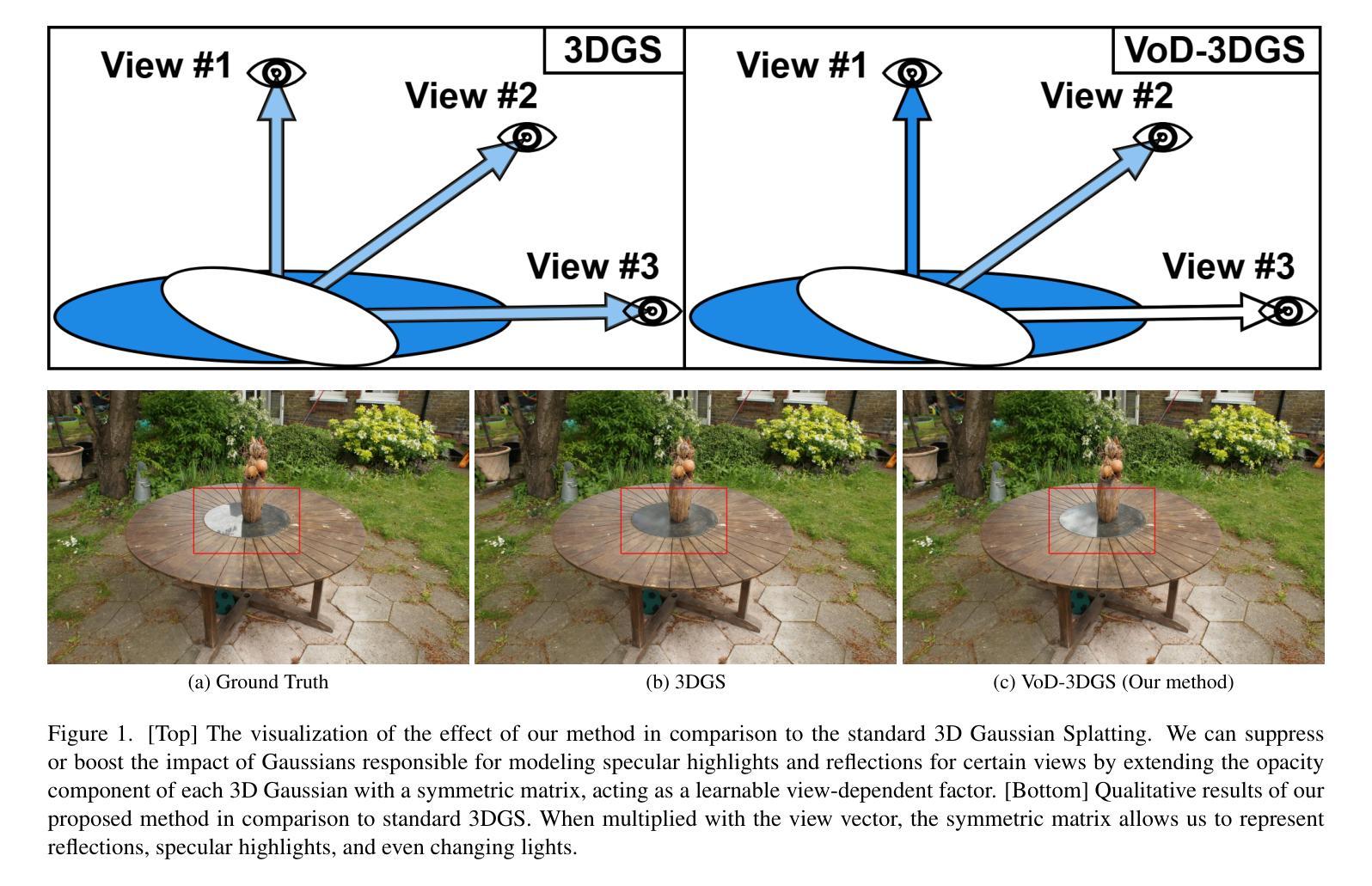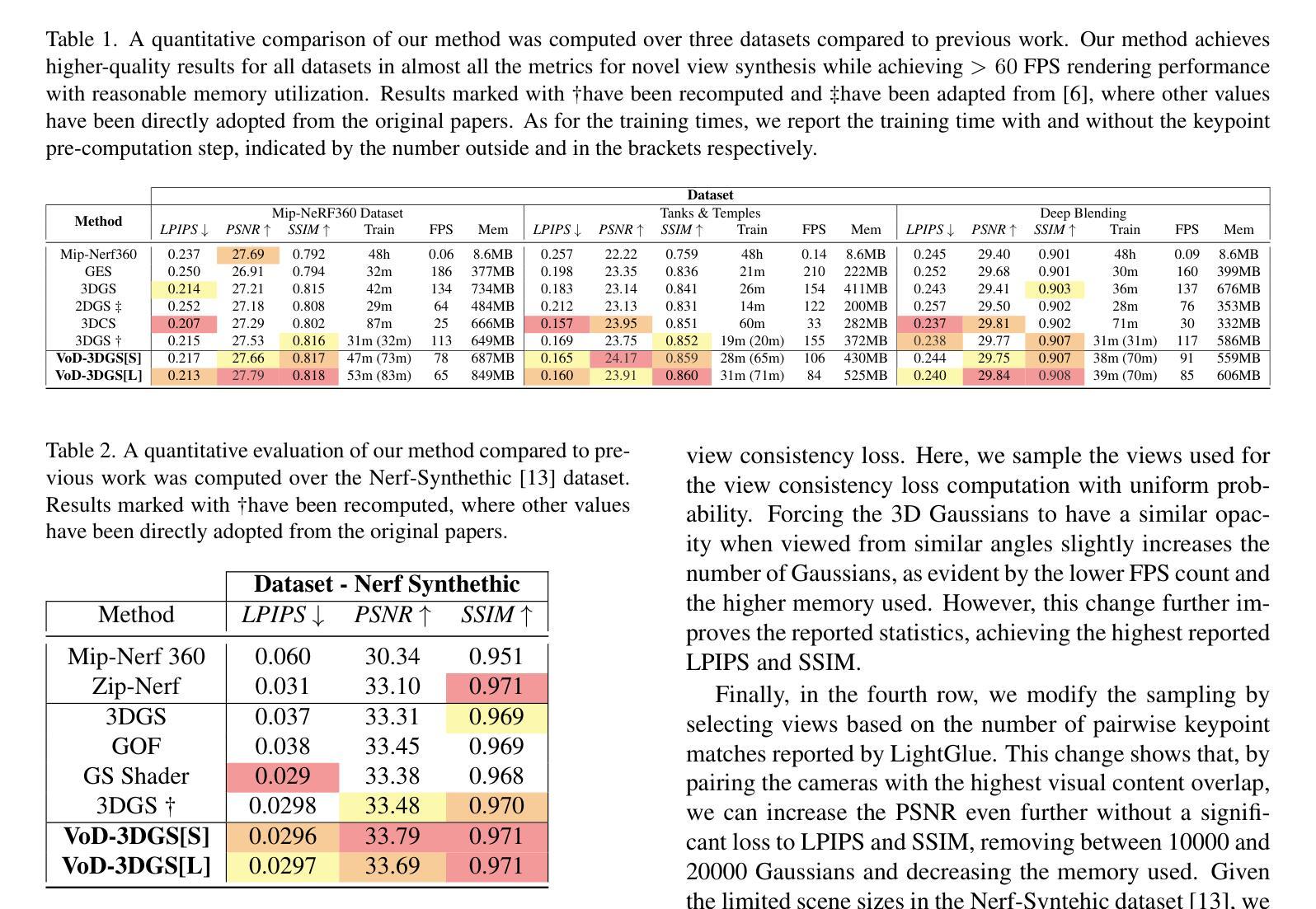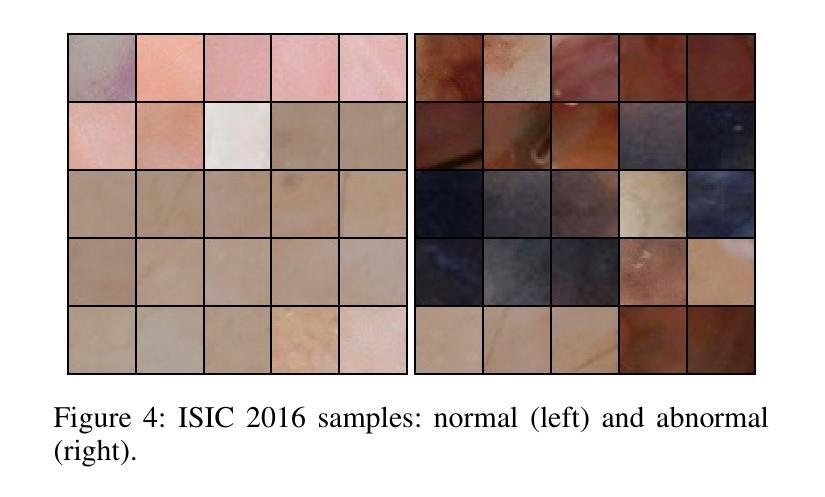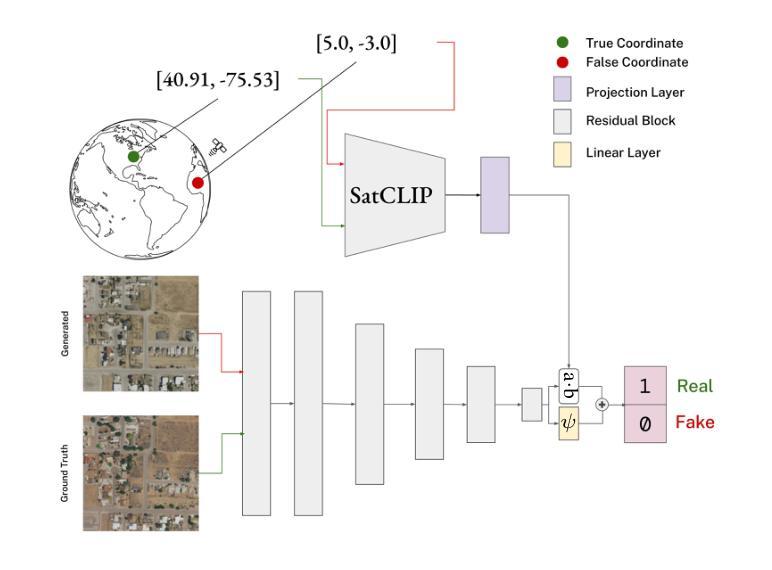⚠️ 以下所有内容总结都来自于 大语言模型的能力,如有错误,仅供参考,谨慎使用
🔴 请注意:千万不要用于严肃的学术场景,只能用于论文阅读前的初筛!
💗 如果您觉得我们的项目对您有帮助 ChatPaperFree ,还请您给我们一些鼓励!⭐️ HuggingFace免费体验
2025-02-01 更新
VoD-3DGS: View-opacity-Dependent 3D Gaussian Splatting
Authors:Nowak Mateusz, Jarosz Wojciech, Chin Peter
Reconstructing a 3D scene from images is challenging due to the different ways light interacts with surfaces depending on the viewer’s position and the surface’s material. In classical computer graphics, materials can be classified as diffuse or specular, interacting with light differently. The standard 3D Gaussian Splatting model struggles to represent view-dependent content, since it cannot differentiate an object within the scene from the light interacting with its specular surfaces, which produce highlights or reflections. In this paper, we propose to extend the 3D Gaussian Splatting model by introducing an additional symmetric matrix to enhance the opacity representation of each 3D Gaussian. This improvement allows certain Gaussians to be suppressed based on the viewer’s perspective, resulting in a more accurate representation of view-dependent reflections and specular highlights without compromising the scene’s integrity. By allowing the opacity to be view dependent, our enhanced model achieves state-of-the-art performance on Mip-Nerf, Tanks&Temples, Deep Blending, and Nerf-Synthetic datasets without a significant loss in rendering speed, achieving >60FPS, and only incurring a minimal increase in memory used.
从图像重建3D场景是一个具有挑战性的任务,因为光线与表面之间的交互方式取决于观看者的位置和表面材质。在经典计算机图形学中,材料可分为漫反射或镜面反射,与光线的交互方式不同。标准的3D高斯喷绘模型在表示视差内容方面存在困难,因为它无法区分场景中的物体与光线与其镜面表面的交互作用,这会产生高光或反射。在本文中,我们提出通过引入一个额外的对称矩阵来扩展3D高斯喷绘模型,以增强每个3D高斯的不透明度表示。这一改进允许根据观看者的视角抑制某些高斯,从而更准确地表示视差相关的反射和高光,同时不损害场景的完整性。通过允许不透明度依赖于视图,我们增强的模型在Mip-Nerf、Tanks&Temples、Deep Blending和Nerf-Synthetic数据集上实现了最先进的性能,几乎没有损失渲染速度,达到> 60FPS,并且仅增加了很少的内存使用。
论文及项目相关链接
Summary
本文提出扩展3D高斯飞溅模型,通过引入额外的对称矩阵以增强每个3D高斯的不透明度表示,以更好地处理不同视角下的光照交互问题。改进后的模型能够更准确地表现视差相关的反射和高光,同时保持场景完整性,且不显著降低渲染速度。
Key Takeaways
- 论文解决了在三维场景重建中,由于光线与表面交互方式的差异导致的视差相关内容的表示难题。
- 传统计算机图形学中的材料分类(漫反射或镜面反射)与光的交互方式不同。
- 标准3D高斯飞溅模型在处理与视图相关的内容时存在困难,无法区分场景中的物体与其镜面反射产生的高光或反射。
- 扩展的3D高斯飞溅模型通过引入额外的对称矩阵,增强每个3D高斯的不透明度表示来解决这一问题。
- 改进后的模型允许根据观察者的视角抑制某些高斯表现,从而更准确地表示视差相关的反射和高光。
- 新模型在不显著降低渲染速度(达到60FPS)和仅增加少量内存使用的情况下,实现了先进的表现性能,并在多个数据集上进行了验证。
点此查看论文截图
